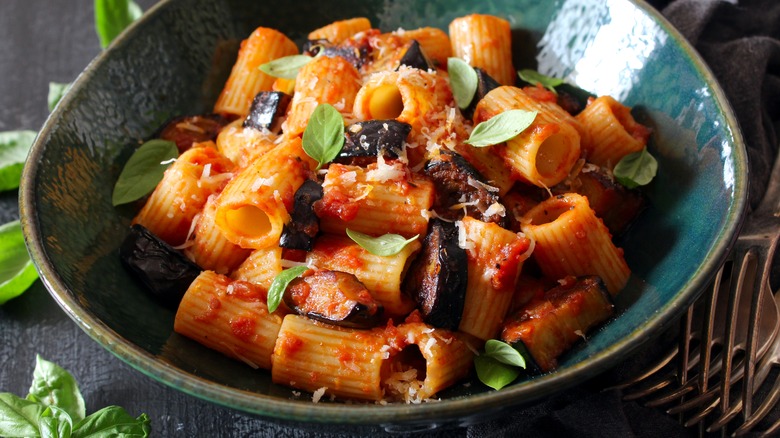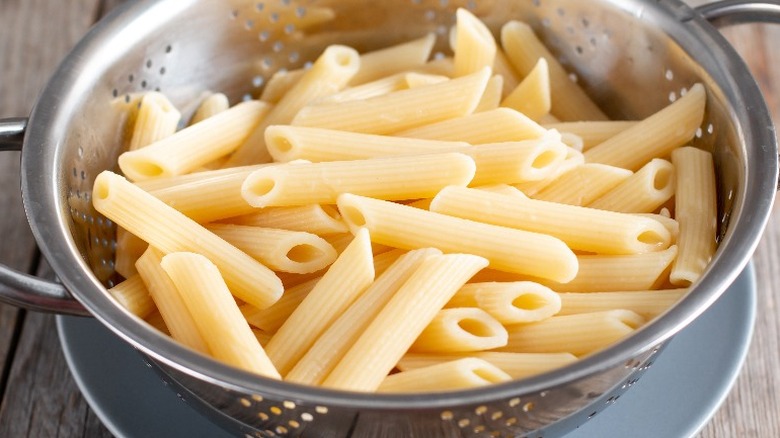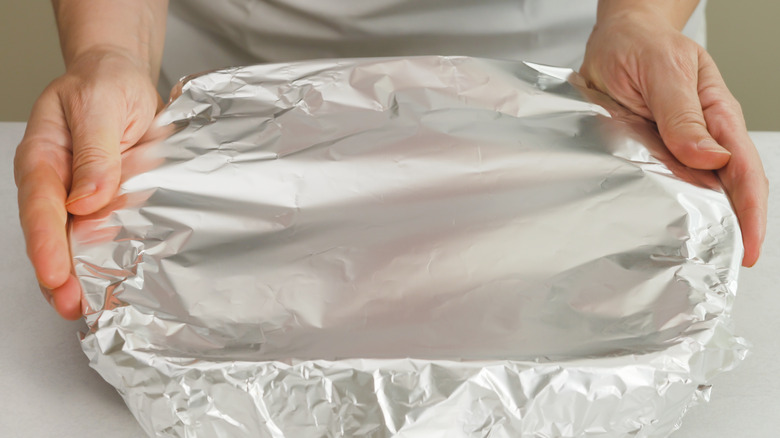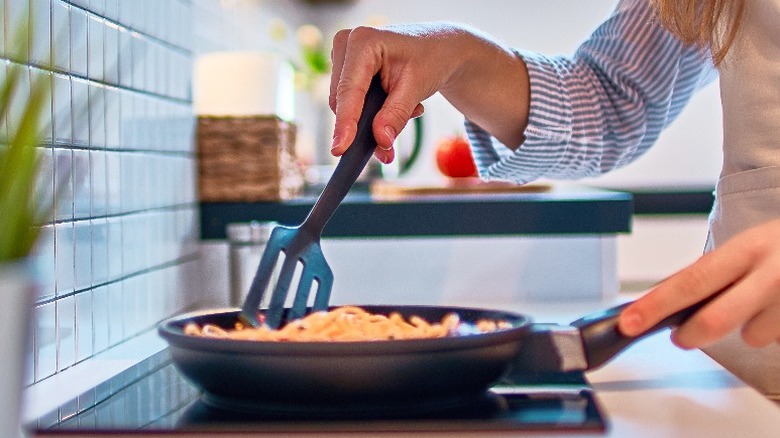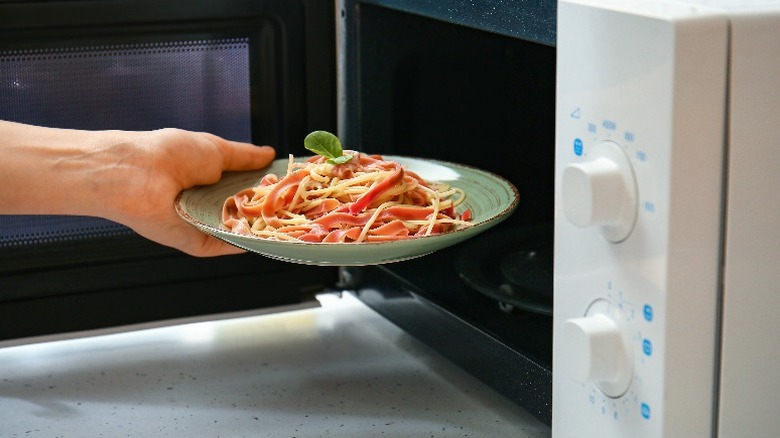The Absolute Best Ways To Reheat Pasta
Fettuccine, spaghetti, macaroni, oh my! Whether it's a cold wintery night or a hot summer day, pasta is always a good idea. With ways to make this dish vegan, vegetarian, gluten-free, and diabetes-friendly, even the carb-fearing few can't resist tucking into a bowl of steaming hot noodles. From light spicy shrimp scampi to rich sausage and ricotta lasagna to an adventurous octopus puttanesca, this versatile food comes in all shapes, sizes, and flavors for every season.
Affordable, filling, and aesthetically pleasing, this globally beloved dish is always a guaranteed crowd-pleaser, making it an obvious go-to for big family gatherings and dinner parties alike. Not to mention, unlike a complex beef Wellington or a finicky steak with Béarnaise sauce, pasta can be mastered even by amateur home chefs (via 9Kitchen).
If you still have some pasta left over at the end of the evening, no problem! Pasta makes a delicious next-day dish, as long as you know the best way to heat up your meal. Unlike its popular Italian counterpart, pizza, most pastas are pretty unappetizing when served cold. Thankfully, there are ways to remedy that issue — let's take a look at the best ways to reheat pasta.
For sauce-free noodles, use a colander and the stove
If you're looking to reheat some day-old (or week-old) pasta, congrats! The hardest part is already over. You created a mouthwatering sauce and boiled some scrumptious noodles — the rest is mere child's play. Luckily, there are not just one, but several ways to recreate the taste and texture of "just cooked" pasta. While some people like to mix their pasta and sauce together on day one, others prefer to store their sauce and pasta separately. If you are a member of the latter party, this reheating solution is catered toward you.
To reheat plain, sauceless, pasta, start by filling a large pot with water and adding some salt, per Taste of Home. Place your pot on the stove and bring the water to a boil. Then, place your pre-cooked pasta into a heat-safe colander. Cautiously submerge the colander into the boiling water for approximately 30 seconds to one minute. As Allrecipes explains, you want this dunking process to be a pretty quick in-and-out to keep your noodles from becoming soggy. Once your noodles are warm to the touch, you'll be ready to combine your pasta with your favorite pasta sauce.
Heating your pasta in the oven is a great go-to
If you chose to combine your pasta and sauce together the night before, don't stress! There's a pasta reheating solution out there for you, too. While the quickest and easiest solution would be to stick your dish in the microwave, there are more effective reheating tactics. According to The Manual, the tool that will deliver the best results is the oven.
Start by preheating your oven to 350 degrees. Then, place your pasta in a shallow, oven-proof dish, and cover the dish with aluminum foil. Let your dish cook for between 10-30 minutes, checking your pasta occasionally. There are several ways to keep your pasta from drying out while it's in the oven, including adding a small splash of water to your dish. Depending on your sauce's texture and flavor, Real Simple also recommends adding in a light layer of Parmesan cheese five minutes before you plan on taking your pasta out of the oven.
The stovetop is another worthy reheating alternative
If time is of the essence or if you're in a rush to get dinner on the table, reheating your pasta dish on the stove is another worthy alternative. According to The Manual, it may be less foolproof than reheating pasta in the oven, but the stovetop is still a very good back-up option for those who want to opt for a faster, more convenient method.
Start by adding your go-to cooking oil to a pan and turning up your stove to medium-high heat, as recommended by Allrecipes. Then, add your pasta and sauce and simmer and sauté your heart away. For best results, stir your pasta frequently for approximately two to five minutes.
Sautéing your pasta has several benefits. For one, if you want to add any additional spices, veggies, or cheese, it is very easy to do so. As you swiftly reheat your meal, you can also taste your pasta dish along the way. Is it missing a little something-something? Did you forget to add in an ingredient the night before? If so, now's the time to sprinkle it into your concoction.
Using a microwave does not need to be a lost cause
We've all been in a situation where using a microwave to reheat a meal may be the only option. Whether you live in a cramped student dorm or you're taking your pasta in a Tupperware to work, sometimes we have to work with what we have. While using a microwave might be the worst-case scenario, it doesn't have to be a lost cause. There are a few tips and tricks that you can rely on to help replicate the creamy, evenly heated pasta dish from the night before.
First and foremost, make sure that you have placed your pasta in a microwave-safe container. Then, stir a little bit of water into your dish to keep your sauce thick and full of moisture (via Epicurious). Water will also help prevent your sauce from sticking together. Taste of Home recommends heating your dish for one minute and then stirring the pasta, to help evenly distribute the heat. Repeat this process until your pasta is at your desired temperature.
